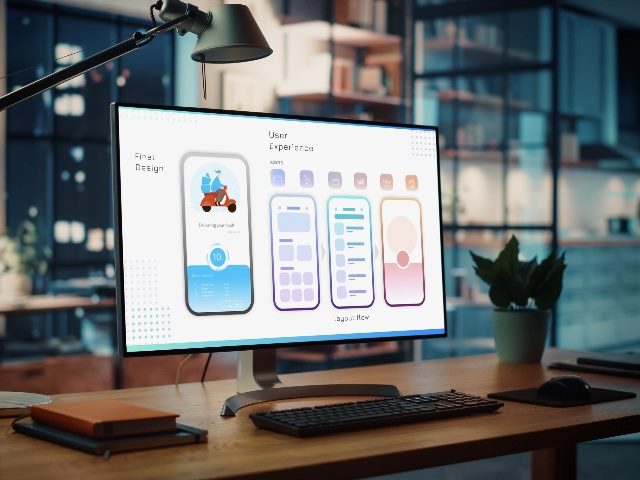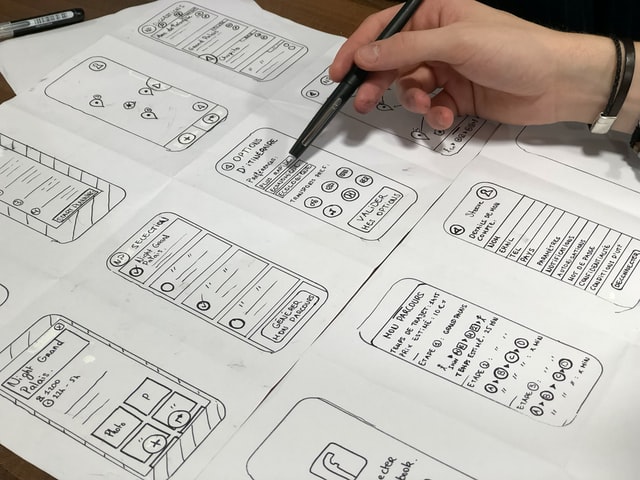The Evolution of UI/UX Design

The landscape of UI/UX design has evolved dramatically over the past few decades. What began as a rudimentary effort to make computers user-friendly has transformed into a sophisticated discipline that shapes how we interact with technology. This evolution reflects broader changes in technology, design philosophy, and user expectations. In this blog post, we’ll explore the journey of UI/UX design from its origins to the present day, highlighting key milestones and trends that have shaped the field.
The Dawn of UI/UX Design: Early Beginnings
In the early days of computing, user interfaces were minimalistic and largely text-based. The primary concern was functionality rather than aesthetics. The command-line interfaces (CLIs) of the 1970s and 1980s were powerful tools but required users to remember complex commands and syntax. This era was marked by a steep learning curve, as computers were predominantly used by experts and engineers.
The introduction of graphical user interfaces (GUIs) in the 1980s marked a significant shift. Pioneering systems like Xerox’s Alto and Apple’s Macintosh offered a more intuitive way to interact with computers. GUIs replaced text commands with icons, windows, and menus, making computing accessible to a broader audience. This period saw the emergence of fundamental design principles such as consistency, feedback, and simplicity.
The 1990s: The Rise of the Web and User-Centered Design
The 1990s brought the advent of the World Wide Web, which introduced a new dimension to UI/UX design. Early websites were basic and text-heavy, but as the web grew, so did the complexity of web design. The introduction of HTML and CSS allowed designers to create more visually appealing and structured web pages.
During this time, the concept of user-centered design (UCD) began to take shape. UCD focuses on understanding the needs and behaviors of users to create more effective and user-friendly designs. Designers started to conduct usability testing and user research to inform their design decisions. This shift was influenced by the growing recognition that a good user experience could significantly impact the success of a product.
The 2000s: Mobile Revolution and Interaction Design
The turn of the millennium marked the beginning of the mobile revolution. The launch of smartphones and tablets introduced new challenges and opportunities for UI/UX designers. Mobile devices required designs that were not only visually appealing but also optimized for small screens and touch interactions.
This era saw the rise of interaction design (IxD), which focuses on how users interact with digital products. Designers began to explore gesture-based controls, haptic feedback, and other interaction paradigms. The goal was to create seamless and engaging experiences that felt natural to users.
The 2000s also saw the emergence of web 2.0, characterized by dynamic and interactive web applications. Websites became more complex, incorporating features like AJAX for asynchronous updates, which allowed for smoother and more responsive user experiences.
The 2010s: Responsive Design and Human-Centered Design
As mobile usage continued to soar, responsive design became a crucial trend in the 2010s. Responsive web design (RWD) ensures that websites and applications adapt to different screen sizes and devices, providing a consistent experience across desktops, tablets, and smartphones. This approach addresses the challenge of designing for a multitude of devices and resolutions, reflecting the diverse ways users access digital content.
Human-centered design (HCD) gained prominence during this decade, emphasizing the importance of empathy and understanding in the design process. HCD focuses on creating solutions that address real user needs and problems. Techniques like user personas, journey mapping, and iterative design became standard practices in the field.
The 2010s also saw the rise of material design, introduced by Google. Material design provided a set of guidelines and principles for creating visually appealing and intuitive interfaces. It emphasized the use of grid-based layouts, responsive animations, and depth effects, contributing to a more cohesive and engaging user experience.

The 2020s: AI, Voice Interfaces, and the Future of UI/UX
The current decade has brought new advancements and challenges to UI/UX design. Artificial intelligence (AI) and machine learning are increasingly integrated into digital products, enabling personalized and predictive experiences. AI-driven design tools and features, such as chatbots and recommendation systems, are becoming more prevalent, enhancing user interactions and automating routine tasks.
Voice user interfaces (VUIs) have also gained traction with the rise of virtual assistants like Amazon’s Alexa and Apple’s Siri. Designing for voice interactions requires a different approach compared to traditional graphical interfaces. Designers must consider factors like natural language processing, conversational design, and auditory feedback to create effective voice experiences.
The focus on accessibility and inclusivity has grown stronger in recent years. Designers are now more aware of the need to create products that are usable by people with disabilities. This includes adhering to accessibility standards, such as the Web Content Accessibility Guidelines (WCAG), and designing with diverse user needs in mind.
The Future of UI/UX Design
Looking ahead, the future of UI/UX design promises to be even more exciting and dynamic. Emerging technologies such as augmented reality (AR) and virtual reality (VR) are poised to revolutionize how we interact with digital content. These technologies offer new opportunities for immersive and interactive experiences, challenging designers to rethink traditional design paradigms.
The integration of AI and machine learning is likely to continue shaping the field, enabling more sophisticated and adaptive user interfaces. As technology evolves, so too will the principles and practices of UI/UX design, driven by a deeper understanding of user needs and a commitment to creating meaningful and engaging experiences. If you enjoyed this article about ui ux design course then visit their page for more interesting articles.
Conclusion
The evolution of UI/UX design reflects the broader changes in technology and user expectations. From the early days of text-based interfaces to the sophisticated and interactive designs of today, the field has continuously adapted to meet the needs of users and the possibilities of technology. As we look to the future, the principles of empathy, usability, and innovation will remain at the core of UI/UX design, guiding us toward new and exciting horizons in the digital world.




